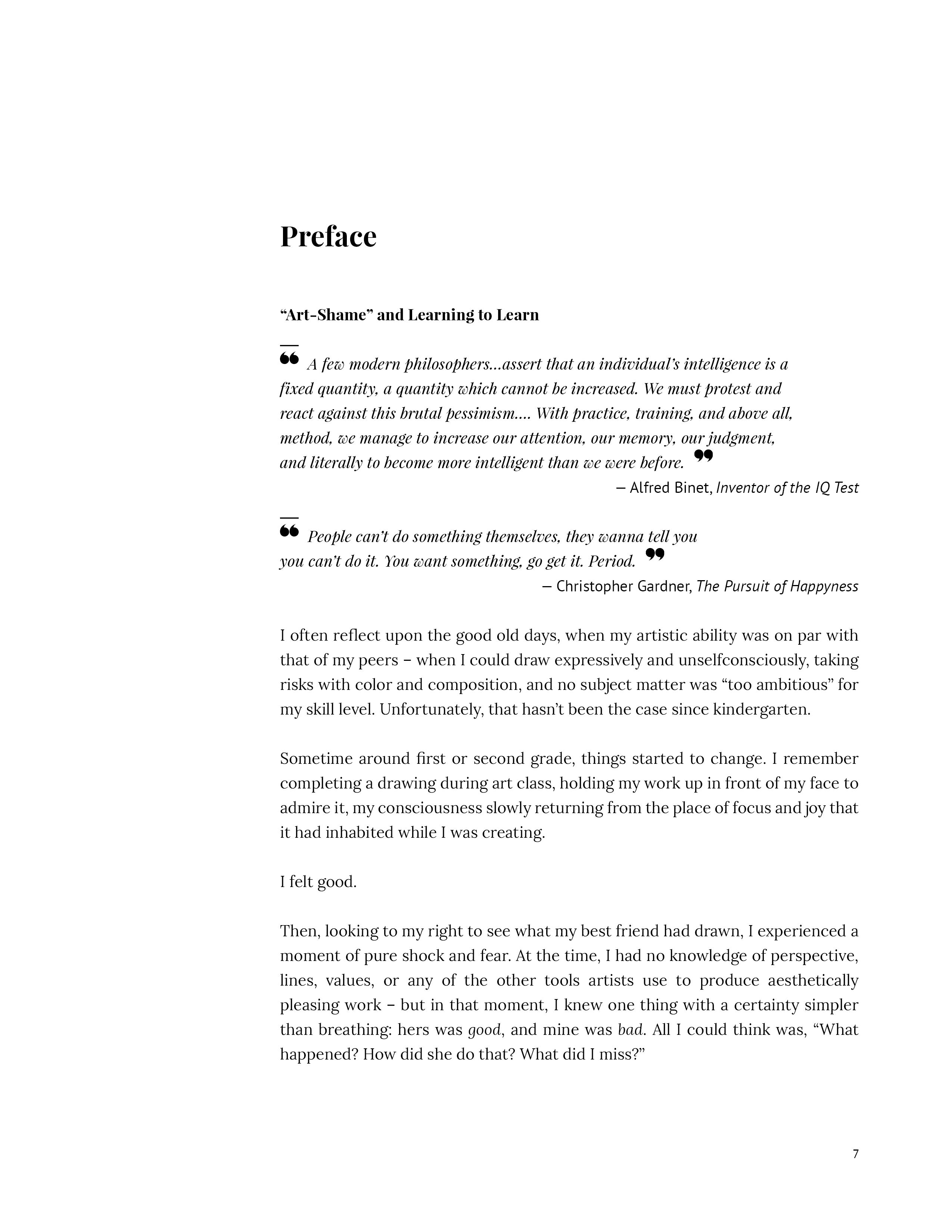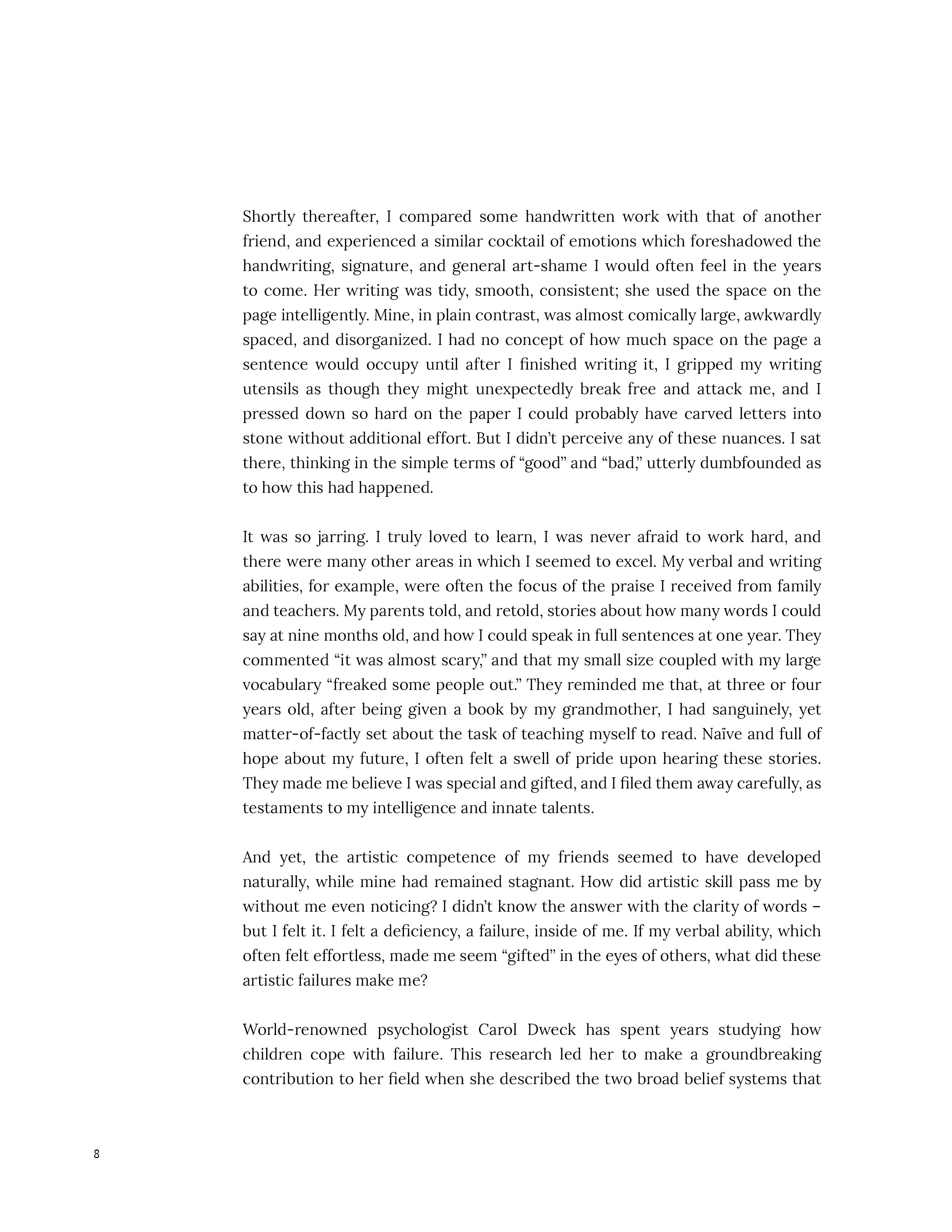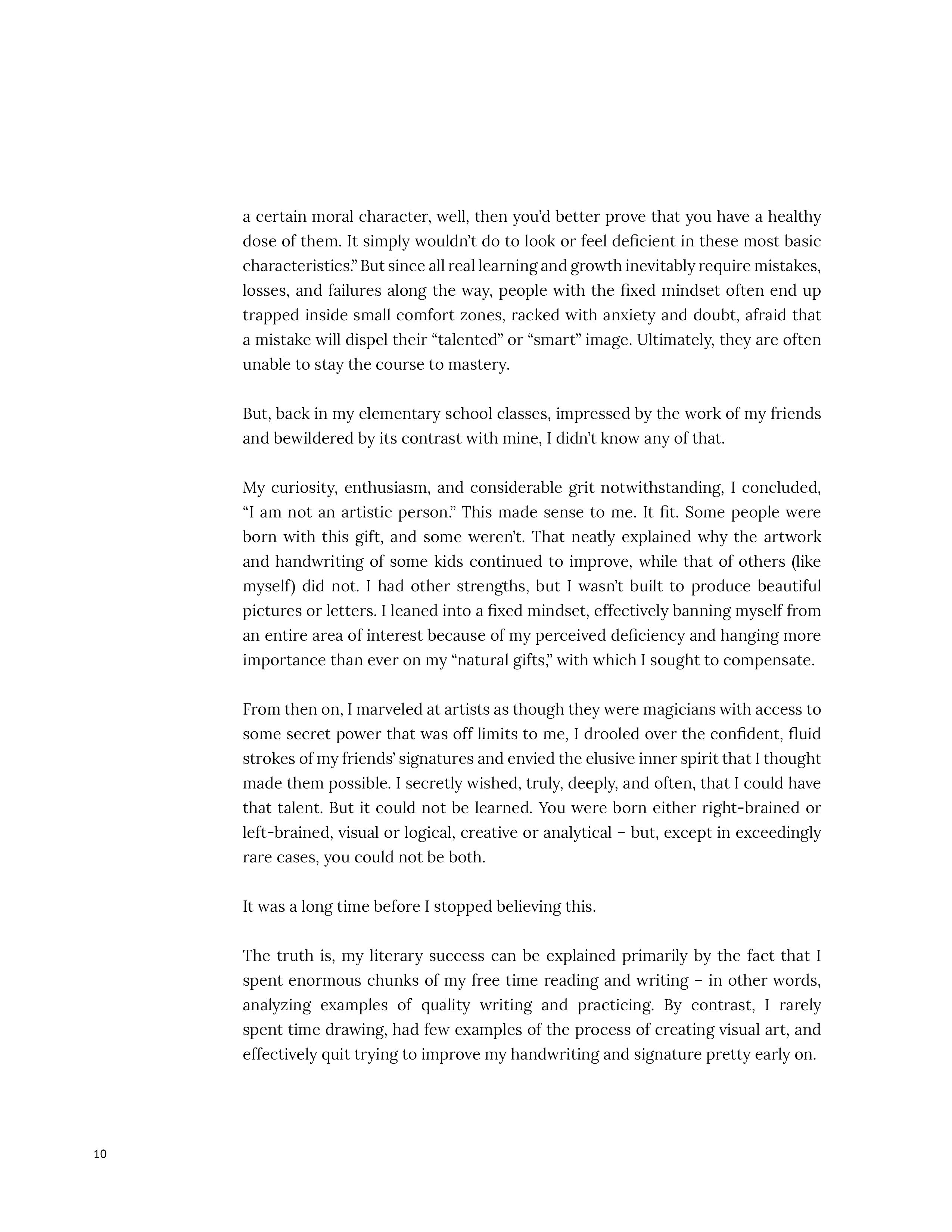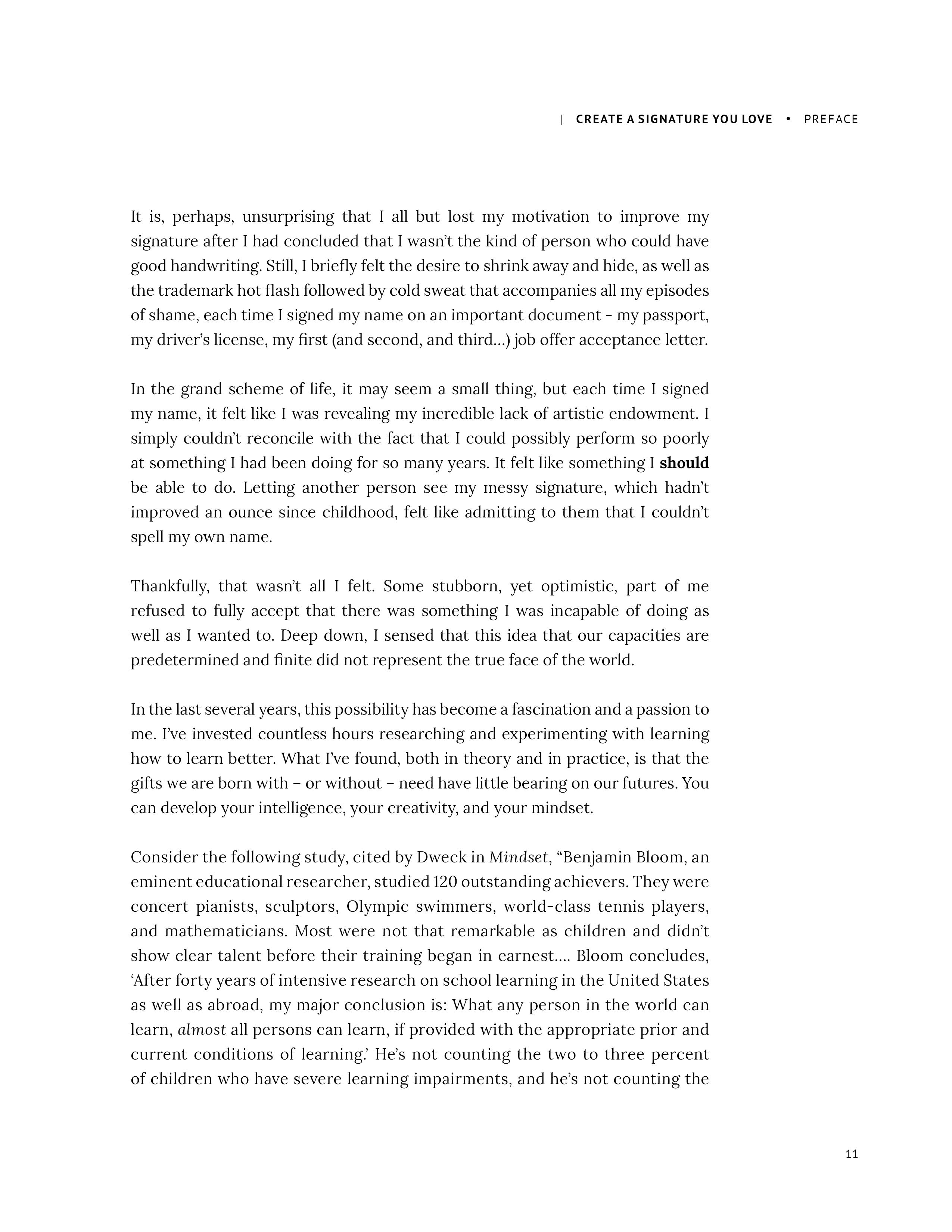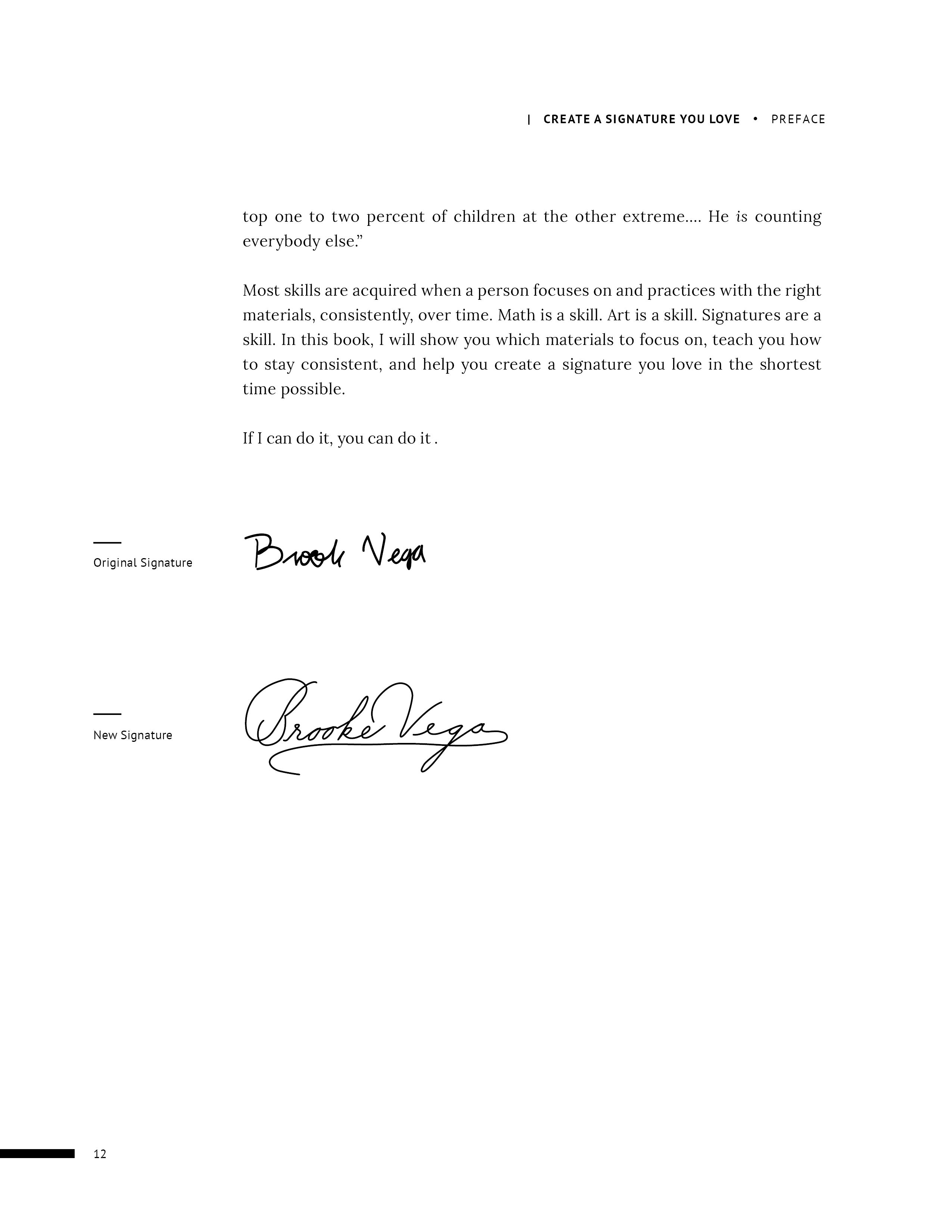If you can get access to the internet, you can learn almost anything you want. You can start right this second. You can do it on your own. Usually, if you have enough patience and tenacity, you can even do it for free.
The internet has democratized education to an unprecedented degree, and self-study programs – whether in the form of video lessons, interactive online courses, or good-old-fashioned books – are wildly popular.
It would be almost impossible to overstate my enthusiasm for self-study. I typically listen to at least two audiobooks per month, I dedicate several hours per week to hone my creative skills on CreativeLive, and I can hardly pass by the Arts/Crafts books in art stores or hobby shops without trying to take a least one home. I love the flexibility and low-stakes of learning on my own, with no one there to rush me or judge me – except, of course, myself.
For all the advantages of self-study, there are some very real challenges that we very rarely discuss. Practicing alone might feel less risky, but what happens when it comes time you evaluate and critique your own work?
To grow your skills, you have to engage in purposeful practice. You have to have a strategy. And that strategy always involves evaluation of your progress and highly specific goal-setting.
Unfortunately, objective self-reflection is not the strong suit of human nature. We tend to make broad value statements about our work and about ourselves. We use words like “good,” “bad,” “pretty,” or “ugly.” As I wrote in Create a Signature You Love, “Statements like these aren’t useful to us because they give us almost no actionable information, and the negative ones do us an additional disservice by putting a damper on our emotional state and eroding our motivation.”
There are three main strategies I recommend for getting around this classically human, but entirely unhelpful habit:
- Don’t work alone! Even if you’re doing self-study, engage with a mentor or a community. This can be as simple as engaging with a group of peers online through social media or Reddit, or as involved as joining/starting a local meetup or finding a teacher to check in with from time to time.
- Let time be a buffer between producing your work and judging your work. Creating takes a certain amount of vulnerability, while critiquing takes a certain amount of objectivity. There is no rule that says you must evaluate yourself while you’re practicing or directly after you’re done. Sometimes the simple act of waiting a day to review your work can allow the emotional charge to dissipate enough for you to judge yourself more fairly.
- Learn to ask yourself better questions. Instead of asking yourself “Did I do a good job or a bad job,” try asking “How is my work different or similar to what I wanted?”
Let’s look at an example.
Here is a study I did in oil on canvas, using Charlie Bowater’s “The Old Astronomer” as a prompt.

It’s all too easy for me to look at these two images side-by-side and begin disparaging mine. Clearly, one is better than the other. But “better” and “worse” aren’t useful to me unless I get more specific.
So I’ll choose to ask myself a better question: how is mine different from the prompt? How is it similar?
First off, I took artistic license in a few areas to better fit my goals and resources.
- Charlie Bowater’s image is a digital painting done in Photoshop with a Cintiq tablet. Mine is oil paint on canvas.
- Mine is taller and thinner, showing more sky and more of the girl’s dress.
- I chose to use a cooler color palette – my sky is a bluer black and my girl is painted in correspondingly cooler tones.
All that being said, how is my image similar to my chosen prompt, or to how I wanted it to be?
- I achieved the “painterly,” unfinished look that I wanted.
- I did fairly well with the proportions and flow of the figure (especially considering this is my first-ever painting of a human form). Her shape also conveys the movement of her twisting and reaching up toward the stars.
How is my image different from the prompt, or from how I wanted it to be?
- I did not achieve the quality of texture that I wanted, particularly in the hair and in the lower parts of the dress. My painting has a “flatter” feel than the prompt does, because there is less fine detail and the interplay, or transitions, between tones are not as well executed.
- In Bowater’s image, there is a beautiful transition happening between the girl and the sky. Particularly in the lower part of the image, the girl’s dress appears to start almost flickering away into the sky. Starts can be seen through it, and the light in the lower corners gives the impression that the girl might actually be made of starlight, or otherwise part of the landscape she is set in. In mine, her dress has hard edges all the way down and the impact is lost a little.
We can stop here. There are a hundred more ways I could dissect and compare my image to Bowater’s, but that isn’t necessary. Charlie Bowater is a professional artist, and I am a relatively new, hobbyist painter. I have recognized and thought critically about a couple of areas where I did well, and I have identified two areas I want to improve on: creating textures and creating transitions.
When you’re new to something, it isn’t useful to get hyper focused on every fault. It’s best to set one to three specific, measurable goals and work toward them with intention during your next practice sessions.
Share with us in the comments:
- How do you practice effective self-critique?
- How did you learn to do this?
